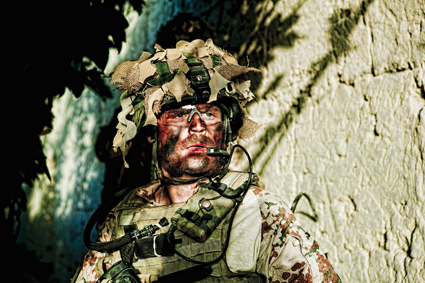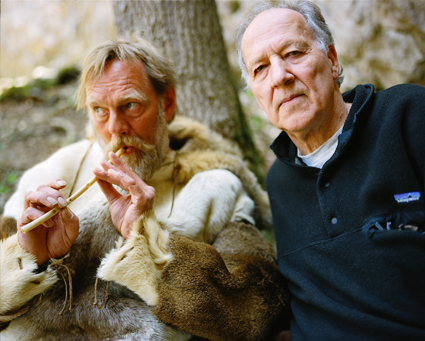new faces of the real
mike walsh: documentaries, toronto international film festival

Armadillo
“YOU HERE FOR THE FILM FESTIVAL TOO?” THE IMMIGRATION OFFICIAL ASKED WEARILY. WITH OVER 300 FEATURES SCREENING IN 10 DAYS, TORONTO HAS NOW OVERTAKEN VENICE AS THE MAIN FESTIVAL IN THE SECOND HALF OF THE YEAR. IT’S IMPOSSIBLE TO SEE EVERYTHING BUT, BY CONCENTRATING ON CERTAIN STRANDS, YOU INEVITABLY CARVE OUT YOUR OWN FESTIVAL. THIS YEAR, MINE INVOLVED THE DOCUMENTARIES THAT SHOWED FILMMAKERS PUSHING NON-FICTION FORMS IN NEW DIRECTIONS.
Just as new lightweight technologies spurred the reinvention of documentary forms in the late 1950s, digital technologies have made documentaries easier to shoot, but more importantly, easier to market through a more diverse range of distribution platforms including more television outlets which concentrate on non-fiction, and the burgeoning film festival circuit. Cannes, Toronto and the festivals that feed off them, now serve as launching pads as important as the specialised doco festivals.
patricio guzmán, nostalgia for the light
Patricio Guzmán’s Nostalgia for the Light was cast in the light of a personal essay which begins from the director’s desire to recover a lost past—a sense of belonging to his country Chile in the period before Pinochet. He approaches this indirectly through his focus on two groups, both of which seek clues to understanding the past, working in the Atacama Desert. The dry atmosphere makes this an ideal place for astronomers who look back across immense stretches of time with their telescopes. The second group are archaeologists whose interest in the past is all too immediate by comparison. They join relatives searching for the burial sites of those disappeared by the military during the junta years.
Guzmán’s film is indignant yet fiercely intelligent, movingly beautiful but unyielding in the understated way it countenances the horrors of Chile’s recent history. The two sciences study the universe in extremes of wide shot and close up. The role of the artist is to synthesise the two. As its unlikely comparisons emerge, they are startlingly obvious. Patterns of calcium can be found in the traces of stars and moons, just as surely as in the bones of the dead. When you wonder whether there is anything to be added to the sorry history of the Chilean junta, someone puts it into a larger pattern that finds a powerfully new way to suggest how everything is connected.

Cave of Forgotten Dreams
werner herzog, cave of forgotten dreams
Archaeology is similarly the focus of Werner Herzog’s 3D film Cave of Forgotten Dreams, which continues his project of re-describing science within the terms of Romanticism. The Chauvet Caves in southern France contain paintings that date back over 30,000 years. Herzog has a long-standing interest in the physicality of cinema and his adoption of 3D technology here is meant to underscore the way that these wonderfully detailed cave paintings are constructed around the contours of the rock.
Herzog’s interest is the origins of homo spiritualis—beings with a consciousness of having a soul. His career has focused on seeking out the limits of human experience where the outlines of this soul can be grasped most clearly. Here the limit is not a geographical one, as in Encounters at the End of the World, but rather one that is at the start of human time.
In contrast to Guzmán’s interest in the past, Herzog’s interest in archaeology lies in its capacity to provide us with the materials to think ourselves into the position of others. The postscript of the film, which employs the metaphor of albino crocodiles (nothing can be everyday in Herzog’s world) reaching out towards their own refracted reflections, acknowledges that the quest is an impossible one, that all we have to grasp at are representations.
errol morris, tabloid
Errol Morris is another filmmaker whose documentaries foreground the limitations on what documentary can tell us. He makes no pretence at being able to capture the truth. All we can know is what can be assembled from competing stories and the way we can connect these to a stock repertoire of images. His latest film Tabloid is the bizarre story of Joyce McKinney and her moment of fame in the late 1970s when she was charged with kidnapping a Mormon in England and holding him as a sex slave. Joyce’s life has been one lived in the thrall of larger fantasies: gods, dogs and finally the self-conscious drama of her own life.
Morris reconstructs the mosaic of stories put forth by McKinney and other surviving participants, particularly the British tabloid reporters who have certainly never been held back by onerous notions of truth. He frequently interpolates graphics and clips from old movies and TV shows, and uses a wash of abstract music as a distancing effect. These are fairly familiar tactics for Morris, though the sensationalised story of McKinney doesn’t provide the type of rich contrast of more serious stories (The Thin Blue Line) or political memoirs (The Fog of War). At his best, Morris works to abstract and defamiliarise the documentary form and make us question the way we arrive at judgements concerning the truth. On more lightweight material, his style seems merely clever.
janus metz, armadillo
It is a commonplace these days to question the distinction between fiction and documentary. Janus Metz’s Armadillo is a documentary which edges its way towards a realist fiction such as The Hurt Locker in its exploration of the adrenalin rush of contemporary war. We follow a team of Danish soldiers through a tour of duty in Afghanistan with intertitles counting down the remaining months in a device similar to Kathryn Bigelow’s film. There are plenty of other devices familiar from fiction films: slow motion, extensive use of non-diegetic music, montage sequences, gradation filters. The assumption is that you need to augment phenomenal reality if you want to arrive at the truth of a moment.
And the truth at which Metz arrives is pretty unvarnished. These soldiers are neither mythicised heroes nor vulnerable innocents. They are a bunch of blokey types sent to do the wrong job. Their training is in shooting people, and while they are keen to do some of that, the bulk of their task turns out to be talking with the locals, fielding the complaints of farmers whose fields are trampled, whose animals are killed and whose families are caught in the crossfire.
Armadillo (the code name of the Danish base) provides a genuinely fresh and immediate perspective on the war in Afghanistan by showing that the war isn’t something that happens only to our soldiers. It happens to Afghanis and the glimpses we see of their commonsensical scepticism about the western military speak volumes about the futility of our engagement there.
jørgen leth, erotic man
Last, and certainly least, we come to Jørgen Leth’s essayistic documentary, Erotic Man. Leth (who you might remember from Lars von Trier’s The Five Obstructions) travels around Latin America making this film and screwing women. The two are closely related. He thinks he is making the film as an anthropological examination of erotic attraction, but it seems more likely that it’s a way for him to get laid. He pursues eroticism with such ponderous self-absorption that is hard to care either way. Leth has become one of those bores who endlessly contemplates the type of film he is making. He claims to have a deep love for women but, of course, it is a love only for the very limited ideas about women he imposes on a bunch of aspiring actresses unwise enough to become the objects of his camera/dick. And here we have it: Jørgen Leth has become the caricature of the cinema that a lot of bad theory in the 1970s saw as its totality.
35th Toronto International Film Festival, Toronto, Canada, Sept 10-19, http://tiff.net/thefestival
RealTime issue #100 Dec-Jan 2010 pg. 16






